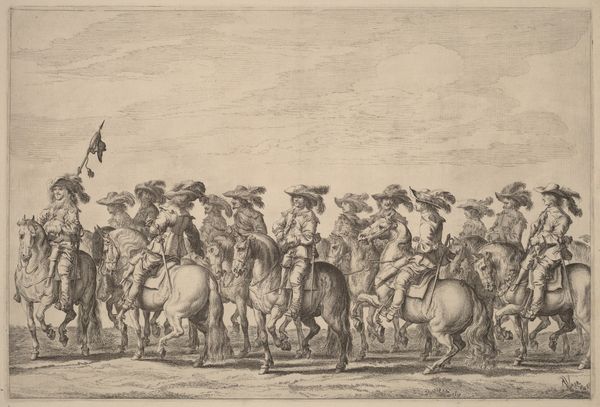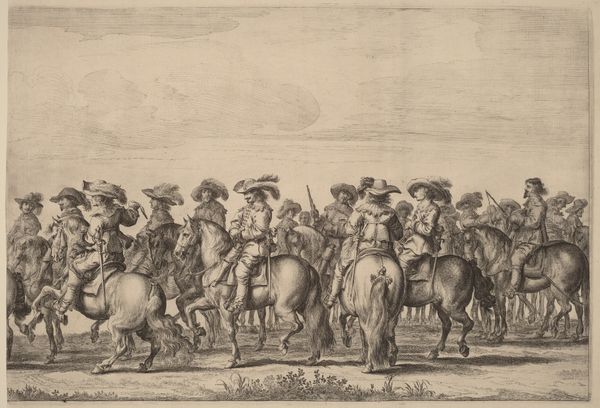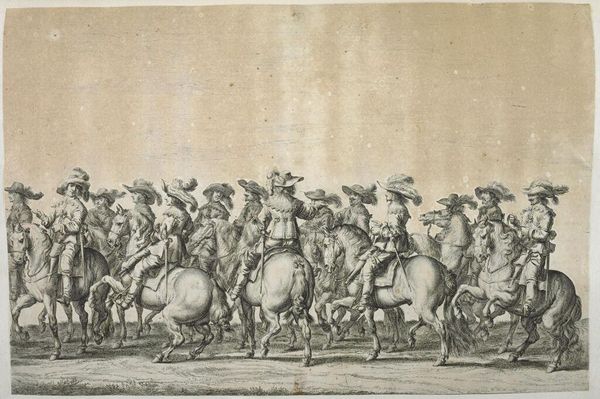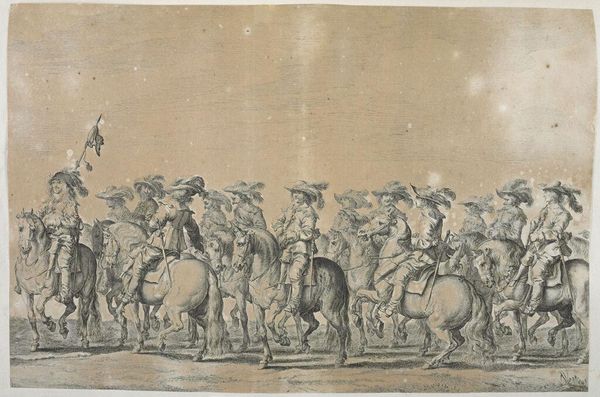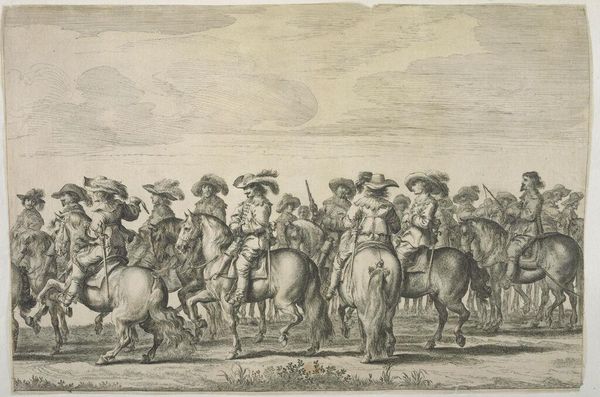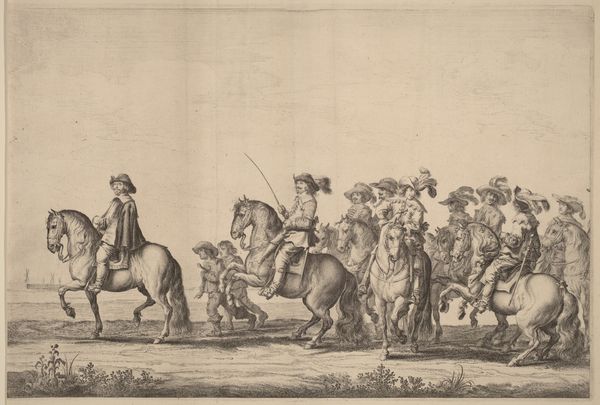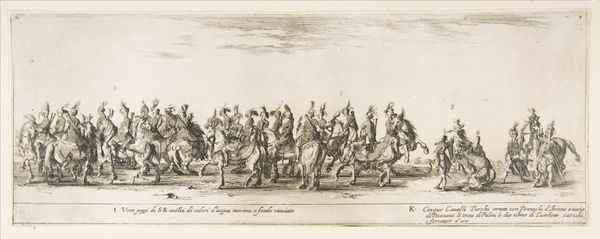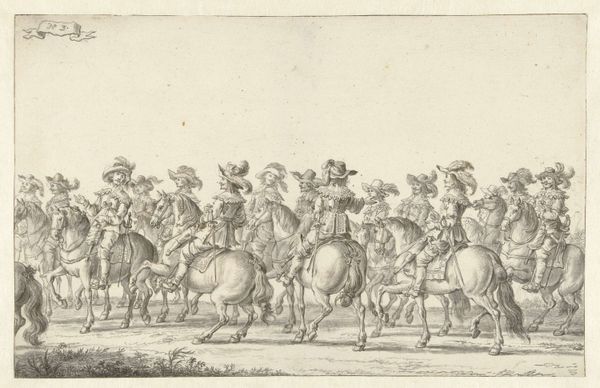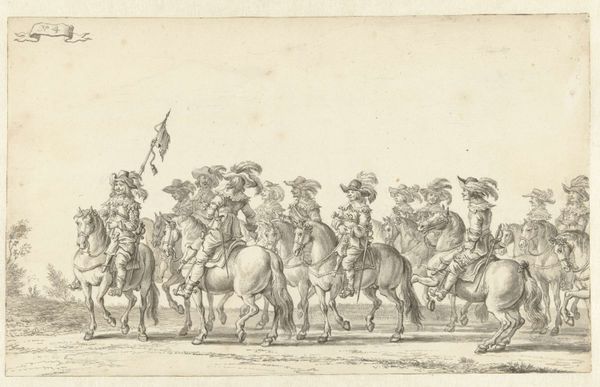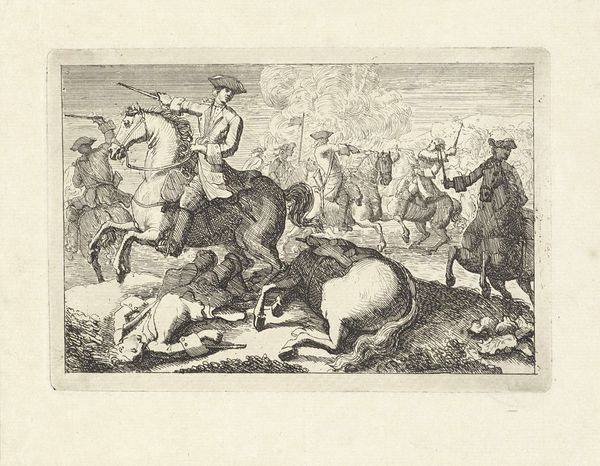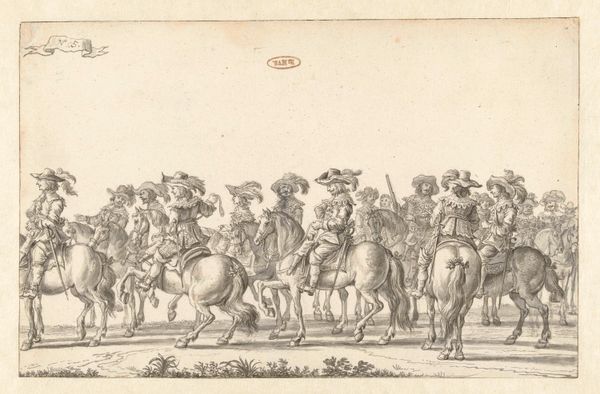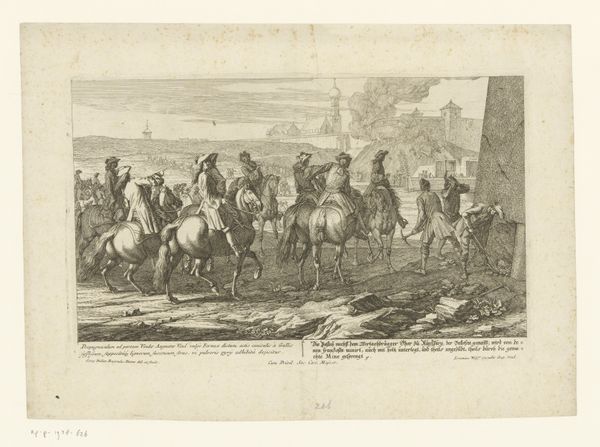![Entry of Marie de Medici into Amsterdam [plate 3 of 6] by Pieter Nolpe](/_next/image?url=https%3A%2F%2Fd2w8kbdekdi1gv.cloudfront.net%2FeyJidWNrZXQiOiAiYXJ0ZXJhLWltYWdlcy1idWNrZXQiLCAia2V5IjogImFydHdvcmtzLzNlYzJmMTMzLWVkOWYtNGVjZi1hZTgyLTBjNWMwNjMxZTU1Yi8zZWMyZjEzMy1lZDlmLTRlY2YtYWU4Mi0wYzVjMDYzMWU1NWJfZnVsbC5qcGciLCAiZWRpdHMiOiB7InJlc2l6ZSI6IHsid2lkdGgiOiAxOTIwLCAiaGVpZ2h0IjogMTkyMCwgImZpdCI6ICJpbnNpZGUifX19&w=3840&q=75)
print, engraving
#
baroque
# print
#
landscape
#
group-portraits
#
history-painting
#
engraving
Copyright: National Gallery of Art: CC0 1.0
Editor: Here we have "Entry of Marie de Medici into Amsterdam," an engraving from 1639 by Pieter Nolpe. It shows a large group of people on horseback. My first thought is how it appears both incredibly detailed and quite flat at the same time, especially in the background. How do you read this piece? Art Historian: The flatness, as you call it, is in part an outcome of Nolpe’s mastery of line. Notice how he varies the weight and density to create a sense of depth, yet maintains an overall evenness in the image structure. Look at the horses. Do you observe how their muscularity is described? Editor: Yes, the lines contouring the muscles of the horses in the foreground are much more defined than those in the back, which definitely gives the impression of depth using line work. But is the almost monotonous tone perhaps intended? Art Historian: Precisely. The uniformity of tone encourages the viewer to perceive the entire composition as a unified surface. Nolpe isn't aiming for photorealistic depth but something of a flattened, baroque grandeur through repetition of form and figure. Editor: So, you're saying the uniformity brings everything forward visually. I hadn’t considered how that tension between depth and flatness could contribute to the overall impact of the print. Thanks for pointing that out! Art Historian: Indeed. Now consider the placement of each figure relative to the picture plane; you’ll discern the genius of the engraver through the structural nuances.
Comments
No comments
Be the first to comment and join the conversation on the ultimate creative platform.
